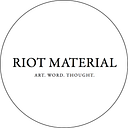Ai Weiwei’s Fraught And Folkloric Life Cycle
at Marciano Art Foundation, Los Angeles (through March 3, 2019)
Reviewed by Emily Nimptsch
“Nationality is a Western concept. It was an invention of Western European scholars, who ever since have struggled to explain it.”
— Joseph Roth, The Wandering Jews, 1927
How do we hold on to hope and humanity in times of upheaval and hardship? Celebrated Chinese conceptual artist Ai Weiwei addresses this very question in his current Marciano Art Foundation installation, Life Cycle (2018). This haunting meditation on the global refugee crisis presents countless figures packed onto an inflatable raft. Resembling a Zodiac boat commonly used in shuttling emigrants to the West, this vessel bursts with human-animal hybrids inspired by the Chinese zodiac. As Ai crafts both of the passengers and the ship here out of bamboo, a building material synonymous with buoyancy and strength, he addresses themes of transition, compassion, and the resilience of the human spirit.
Known for his overt criticism of the Chinese government as well as his 2011 detainment for unfounded tax evasion charges, this outspoken artist has long devoted himself to being a voice for the voiceless. In 2017, Ai debuted Human Flow, a heart-wrenching documentary film investigating how widespread political violence and environmental disasters have now forced over 65 million from their homes worldwide.
As Ai’s first museum exhibition in Los Angeles, Life Cycle expands on this topic while heightening the emotions to a new, searing level of intensity. Likely a reference to the Old Testament tale of baby Moses floating down the Nile River, this vessel is essentially an enormous basket. Its woven bamboo construction offers little protection from the elements. Here, the bamboo, the ship, and the souls on board are all hollow. This ghostly apparition points to the invisibility of refugees as many nations refuse to recognize their plight.
With their great animal heads, these imposing, zodiac-inspired figures are fully recognized and valued in their native China. However, without this cultural context, they can be easily misunderstood as terrifying monsters plucked straight from Goya’s nightmares. Here Ai reveals the pain, heartache, and uncertainty associated with stripping a person from their societal background. He argues that now is the time for humanity shift away from suspicion and welcome strangers at the door.
Ai also acknowledges that this refugee crisis is not new. In fact, he provides the viewer with a historical framework by literally framing the vessel with a series of refugee-centric quotations. Here writers and philosophers across space and time, including Homer, St. Augustine, and Franz Kafka, all openly express sympathy and compassion for the displaced. Even Socrates, the father of Western civilization himself, supports the cause via a 470 BCE statement declaring, “I am not an Athenian or a Greek, but a citizen of the world.”
Ai further steeps this crisis in history and mythology through the ancient narrative archetypes of the ship, the shipwreck, and the hero’s journey. Upon witnessing Life Cycle, the viewer immediately links this installation to French Romantic painter Théodore Géricault’s masterpiece, The Raft of the Medusa (1818–1819). This oversized oil painting depicts the gruesome aftermath of the wreck of the French naval frigate Méduse off the coast of Mauritania. All but 15 of the 147 survivors set adrift on a raft died of starvation, dehydration, and cannibalism. While Géricault’s version of this historical event does not shy away from these horrifying realities, it also depicts hope and triumph through the ecstatic depiction of passengers waving down a distant rescue ship. One could also compare Ai’s momentous work here to Homer’s Odyssey and the biblical story of Noah’s Ark. . .
To read the rest of this review, go to Riot Material magazine: https://www.riotmaterial.com/ai-weiwei-life-cycle/
And please follow us on Facebook: https://www.facebook.com/riotmaterial/
